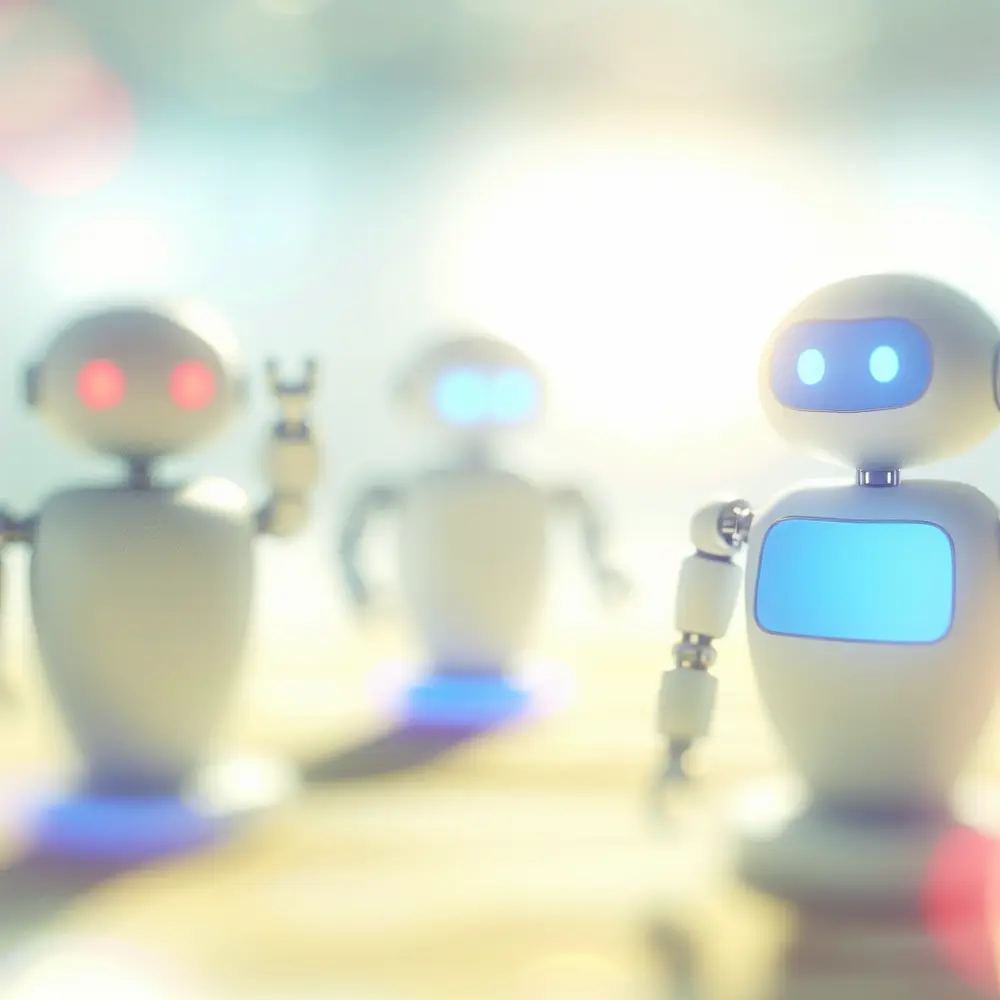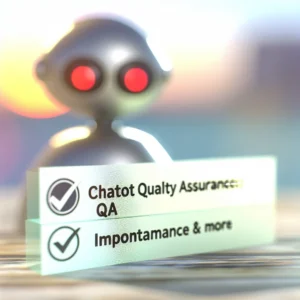As we navigate the digital age, businesses are continually seeking innovative solutions to enhance customer interactions and operational efficiency. One of the most groundbreaking advancements in this domain is the rise of chatbots. These AI-driven systems have transformed the landscape of customer service, enabling businesses to engage with their clients more effectively than ever before. With their ability to provide immediate assistance around the clock, chatbots ensure that customer queries are addressed without delay, a factor that is crucial in today’s fast-paced environment.
Chatbots utilize sophisticated technologies, including natural language processing (NLP) and machine learning, to understand and respond to inquiries with remarkable accuracy. This not only elevates the user experience but also streamlines internal operations by alleviating the workload on human agents. As firms strive to maintain high levels of customer satisfaction and loyalty, the significance of integrating chatbot solutions cannot be overstated. Yet, before diving into implementation, it is essential to understand the various types of chatbots, the technologies that underpin them, and how to create one that meets specific business goals.
In the sections that follow, we will explore the transformative impact of chatbots on customer experience, the different types of chatbots available, and the essential technologies powering these intelligent systems. We will also provide a step-by-step guide to building your first AI chatbot, discuss the challenges and considerations when integrating this technology into your business, and look toward the future of chatbot development. Join us on this journey to better understand how chatbots can revolutionize customer interactions and drive your business forward.
Understanding Chatbots and Their Benefits
Chatbots have revolutionized the way businesses interact with their customers by providing immediate, AI-driven solutions that enhance user experience and streamline operations. These intelligent systems leverage natural language processing (NLP) and machine learning algorithms to understand and respond to user inquiries effectively. With their capacity to operate 24/7, chatbots ensure that customer queries are handled promptly, which significantly improves customer satisfaction and loyalty.
One of the primary advantages of chatbots is their ability to handle a multitude of requests simultaneously, eliminating the bottlenecks associated with human-operated customer service. This scalability is particularly beneficial for companies experiencing high volumes of inquiries, as it allows for consistent engagement without compromising service quality. Furthermore, integrating chatbots into existing systems can reduce operational costs by minimizing the need for extensive customer support teams while freeing up human resources to focus on more complex tasks that require a personal touch.
Additionally, AI-driven chatbots provide significant data analytics capabilities. They can track user interactions and preferences, offering invaluable insights that can help businesses refine their service offerings, target marketing efforts, and enhance product development. By analyzing chat histories, companies can identify common issues and questions that arise, enabling them to proactively develop content or solutions that address these concerns before they escalate.
Moreover, the adaptability of chatbots makes them suitable for a range of applications across various industries—from retail and finance to healthcare and travel. They can assist with booking appointments, processing transactions, providing personalized recommendations, or troubleshooting problems in real time. As technology advances, the functionalities of chatbots will continue to evolve, enabling them to handle increasingly complex conversations and tasks, thereby solidifying their role as essential tools for automation in an ever-competitive business landscape.
Types of Chatbots
Chatbots have rapidly evolved, providing various solutions to fit diverse business needs. Understanding the types of chatbots is crucial for developers, IT professionals, and companies seeking automation. The primary types of chatbots include rule-based chatbots, AI chatbots, and hybrid chatbots, each with distinct functionalities.
Rule-based chatbots operate on predefined flows and respond to specific keywords. These chatbots follow a deterministic approach, making them suitable for straightforward tasks such as FAQs and simple customer queries. Developers can use tools to configure the flow and manage the responses available; however, their limitations become apparent with complex questions that deviate from the script. These chatbots are best for businesses with simple interaction requirements who want to provide quick answers without investing in sophisticated AI solutions.
AI chatbots leverage machine learning and natural language processing (NLP) to understand and respond to user inquiries more dynamically. Unlike rule-based chatbots, AI chatbots learn from interactions, allowing for improved accuracy and relevance over time. This type of chatbot can handle more complex conversations, making it ideal for businesses that require a higher level of engagement and customer support. Companies looking to implement AI chatbots can benefit from platforms that offer pre-trained models or customization options to train a chatbot tailored to specific business needs.
Hybrid chatbots combine the strengths of both rule-based and AI chatbots, allowing organizations to create a versatile solution. They can handle straightforward queries with predefined responses while also employing AI technology for more nuanced interactions. This flexibility allows businesses to optimize their customer service operations, ensuring that users receive immediate assistance for simple questions while still being routed to human agents or more advanced capabilities when necessary. Hybrid chatbots are particularly advantageous for companies looking to future-proof their automation strategies.
Technologies Behind AI Chatbots
The development of AI chatbots relies heavily on sophisticated algorithms and frameworks that enhance their functionality and user experience. At the core of chatbots are Natural Language Processing (NLP) algorithms, which enable the system to understand and generate human language. Key techniques within NLP, such as tokenization, named entity recognition, and sentiment analysis, allow chatbots to interpret user input meaningfully, respond appropriately, and maintain context in conversations.
Machine Learning (ML) is another fundamental technology underlying AI chatbots. Supervised learning algorithms train chatbots using historical data, enabling them to predict user intents based on previous interactions. Techniques such as decision trees, regression models, and support vector machines are commonly employed. In contrast, unsupervised learning helps chatbots detect patterns in data without pre-labeled outcomes, aiding in the generation of more generalized responses and improving adaptability over time.
Frameworks play a crucial role in simplifying the deployment and integration of AI chatbots. Popular frameworks such as Rasa, Microsoft Bot Framework, and Dialogflow provide developers with essential tools to create and manage sophisticated chatbots. These frameworks not only facilitate the seamless integration of chatbots into various platforms but also offer pre-built components that accelerate development time. They often come with rich APIs and support for multiple programming languages, making it easier to tailor chatbots to specific business needs.
Furthermore, advancements in deep learning have introduced neural networks into the chatbot development landscape. Neural networks, particularly recurrent neural networks (RNNs) and transformers, have demonstrated exceptional performance in language modeling and conversation generation. Such frameworks allow chatbots to engage in more human-like interactions and hold context over longer dialogues. By harnessing these technologies, developers can create robust AI solutions that improve customer engagement and streamline automated communication processes.
How to Build Your First AI Chatbot
Building your first AI chatbot can seem overwhelming, but breaking it down into manageable steps can simplify the process. First, define the purpose of your chatbot. Determine the specific tasks it will handle, such as customer support, FAQs, or even complex transactions. A clear understanding of its functionality will serve as a foundation for its development. Focus on creating user personas to identify your target audience, which helps in tailoring the chatbot’s conversational tone and responses to meet their expectations.
Next, select the right tools and platforms for developing your chatbot. There are numerous frameworks available, such as Microsoft Bot Framework, Google Dialogflow, and Rasa, each offering different features and capabilities. Evaluate these options based on their ease of use, integrations with other tools, and support for natural language processing (NLP). Once you have chosen the framework, initiate the design phase by drafting conversation flows. Use flowcharts or storyboards to visualize how interactions will unfold, ensuring that user intents and responses are well-crafted to provide a seamless experience.
After laying the groundwork, it’s time to dive into the development phase. Start by creating intents, which represent the goals of user messages. Pair each intent with training phrases to help the AI understand variations of user queries. Implement entity recognition to allow the chatbot to capture essential information such as dates, products, or user preferences. Throughout this stage, continuously test responses to ensure accuracy and refine the chatbot’s ability to understand user queries. Integration with third-party APIs may also enhance functionalities, providing richer responses and capabilities.
Once development is complete, focus on testing and iterating your chatbot. Conduct tests with real users to gather feedback on its performance and usability. Identify any gaps in knowledge or areas for improvement, and be willing to make adjustments based on user interactions. After thorough testing, deploy your chatbot on your preferred channels, such as websites, messaging apps, or customer service platforms. Monitoring its performance and user engagement post-launch is crucial. This ongoing evaluation will help you make informed updates and enhancements, ensuring that your AI chatbot consistently meets user needs and expectations.
The Integration of Chatbots in Businesses
Integrating chatbots into business operations is a transformative step that organizations can take to enhance customer interaction, streamline processes, and improve overall efficiency. One of the primary benefits of chatbots is their capacity to provide 24/7 service to customers. Unlike traditional customer service methods, chatbots do not require breaks or time off, ensuring that clients receive immediate responses irrespective of the hour. This constant availability leads to higher customer satisfaction, ultimately boosting loyalty and retention rates.
Moreover, AI-driven chatbots can handle a multitude of customer queries simultaneously. By leveraging natural language processing and machine learning, these chatbots can understand and respond to various inquiries, significantly reducing the workload for human agents. This allows human staff to focus on more complex issues that require critical thinking and emotional intelligence. Furthermore, chatbots can efficiently guide customers through the sales funnel, assisting with everything from initial inquiries to complete transactions, which can consequently lead to increased sales and improved conversion rates.
Despite the clear advantages, integrating chatbots into business operations does come with its set of challenges. One significant challenge is ensuring that the chatbot is programmed with appropriate responses and the ability to learn from interactions. If not adequately trained, chatbots can provide irrelevant or incorrect information, leading to customer frustration. Continuous monitoring and updating of the chatbot’s database are necessary to keep it relevant and effective, which may require additional resources and expertise.
Another potential hurdle involves user acceptance. Employees and customers alike may be apprehensive about interacting with AI solutions, fearing a lack of personal touch in communication. Organizations must invest in clear communication about the benefits of chatbots and provide training to employees on how to work alongside these tools effectively. Additionally, offering customers easy access to human agents when necessary can alleviate concerns, ensuring a seamless transition between human and machine interaction. By navigating these challenges thoughtfully, companies can harness the power of chatbots to optimize their operations effectively.
The Future of Chatbot Technology
The future of chatbot technology is poised to bring about unprecedented advancements, driven by artificial intelligence (AI) solutions that are continually evolving. As more businesses and developers embrace automation, chatbots are becoming increasingly sophisticated. One of the most significant trends is the shift towards natural language processing (NLP) capabilities. This advancement allows chatbots to understand and respond in a more human-like manner, making interactions smoother and more engaging for users. Expect to see chatbots that can comprehend context, sentiment, and even nuances in human conversations, resulting in enhanced customer experiences.
Another forthcoming trend is the integration of AI chatbots with other emerging technologies such as machine learning and big data analytics. By leveraging vast amounts of data, AI solutions can develop more accurate responses and predictions, providing personalized assistance to users. This integration facilitates proactive customer support, where chatbots can anticipate user needs based on previous interactions and behaviors. Furthermore, as these technologies progress, chatbots are expected to become more adaptive, learning from each interaction to improve their performance and effectiveness consistently.
Security and privacy concerns will also shape the future of chatbot technology. As organizations increasingly rely on chatbots to handle sensitive user data, developers will need to prioritize robust security measures. This includes implementing advanced encryption techniques and adhering to data compliance regulations. Expect to see chatbots with enhanced security features that build user trust and ensure safe interactions. Additionally, transparency in how these AI solutions operate will be paramount, as consumers demand clarity about their data usage and protection.
Finally, the emergence of multi-platform chatbots indicates a shift toward greater accessibility. Consumers are using various messaging platforms, and chatbots that can seamlessly integrate across these platforms will take center stage. This means developing chatbots capable of functioning on social media, websites, and messaging apps, offering a cohesive user experience regardless of the channel. In conclusion, the future of chatbot technology, driven by AI solutions, promises significant improvements in interaction quality, security, and accessibility, making them indispensable tools for companies seeking automation and enhanced customer engagement.
Enhancing Customer Experience with AI Chatbots
AI chatbots are transforming customer experience by providing prompt, efficient, and personalized interactions. With the increasing demand for immediate service, businesses are leveraging AI solutions to enhance the quality of their customer engagement. Unlike traditional customer service methods, AI chatbots are available 24/7, offering real-time assistance and significantly reducing wait times. This availability ensures that customers receive help whenever they need it, leading to higher satisfaction rates and improved brand loyalty.
The integration of AI chatbots allows companies to gather valuable data on customer preferences and behaviors. By analyzing these insights, organizations can refine their strategies and improve service delivery, ensuring that interactions are more aligned with customer needs. This level of personalization not only enhances the overall customer journey but also strengthens the relationship between businesses and their clients. Additionally, the scalability of AI chatbots enables companies to handle varying volumes of inquiries without compromising quality, a critical factor in maintaining operational efficiency.
Moreover, AI chatbots evolve through machine learning algorithms, continuously improving their capabilities over time. As these systems learn from interactions, they become more adept at handling complex queries, providing relevant answers, and even predicting customer issues before they arise. This proactive approach not only boosts customer satisfaction but also allows support teams to focus on higher-priority tasks, effectively optimizing resources within organizations.
In conclusion, AI chatbots are poised to elevate customer experience significantly. By facilitating seamless and personalized interactions, enhancing operational efficiency, and continuously learning from customer data, these tools are essential for businesses aiming to excel in a competitive landscape. Embracing AI chatbot technology not only meets current customer expectations but positions companies for future success as the digital landscape continues to evolve. For more on how you can integrate chatbots into your operations, check out our CRM that is essential for businesses seeking to grow.









